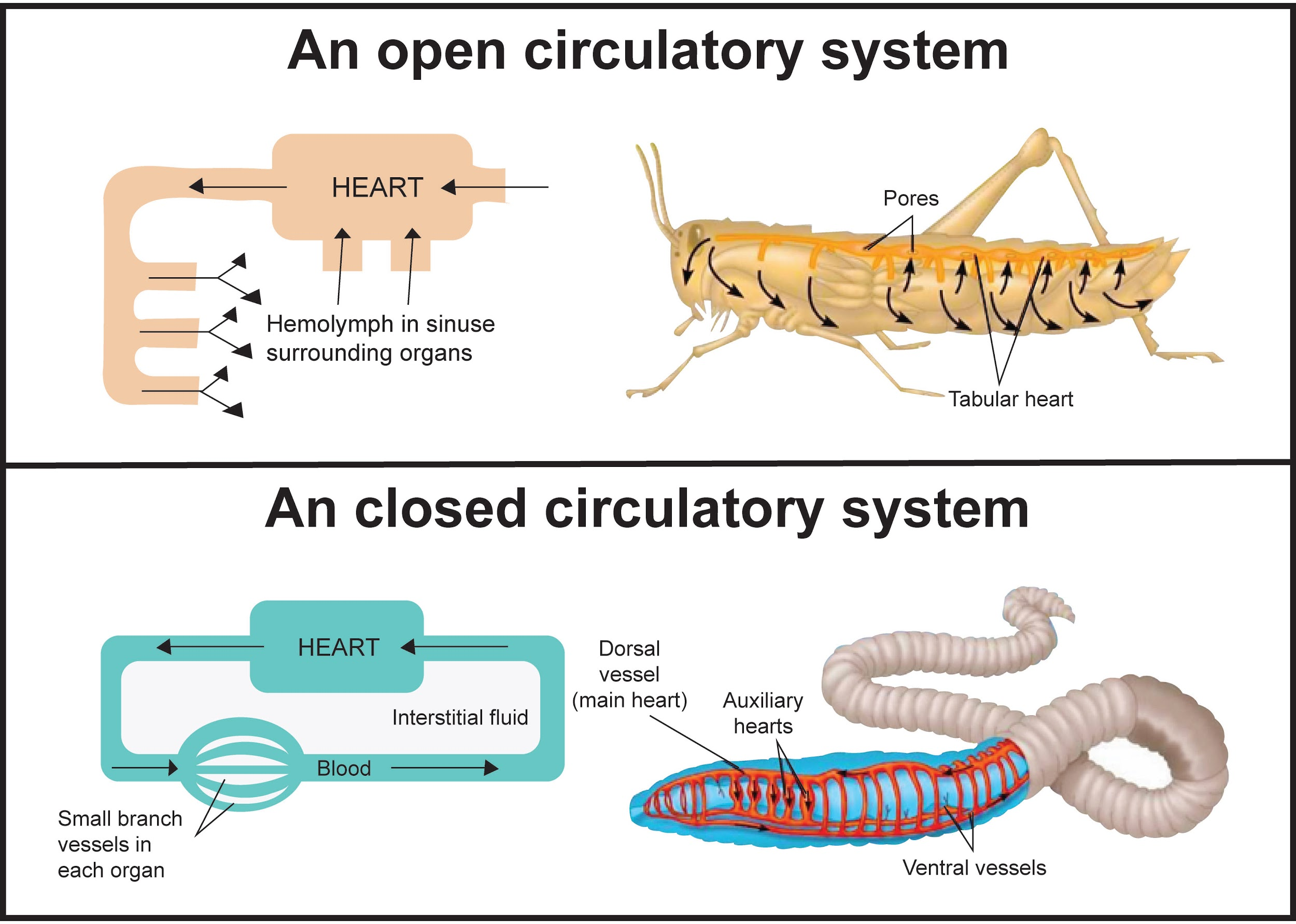
Hemolymph is a term used for the blood of the organism having
(a)Water circulatory system
(b)Closed circulatory system
(c)Open circulatory system
(d)Blood circulatory system
Answer
548.7k+ views
Hint: Blood is a type of special connective tissue whose function is to deliver oxygen and nutrients to the different tissue of the body and take carbon dioxide and excretory products away from them. Hemolymph is seen in place of blood in organisms of Arthropoda and Mollusca.
Complete answer:
Hemolymph is the term used for the blood of the organisms having an open circulatory system. In such a system, the blood instead of flowing inside closed vessels such as arteries and veins flows into a central body cavity known as hemocoel. All the cells of the blood are directly bathed in the hemolymph present inside the hemocoel. The hemolymph combinedly performs the functions of blood, lymph, and interstitial (intercellular space) fluids as there is not a clear distinction between them in an open circulatory system. This type of system is usually seen in invertebrates like arthropods and mollusks.
Additional Information: Closed circulatory system: Closed circulatory system is a type of blood system in which the blood circulates within closed vessels known as arteries, veins, capillaries, etc. The benefit of a closed circulatory system is that there is a focused transport of materials to the tissues without the wastage of energy. The exchange of materials between the tissues and the blood takes place through the thin membrane of the capillaries. Examples- Annelida, Chordata
Water circulatory system: The water circulatory system is seen in the animals belonging to the phylum Porifera commonly known as sponges. In this system, water is circulated throughout the body in order to gather food, exchange gases, and waste removal. The water is made to enter the body through tiny pores called Ostia into a large cavity called spongocoel and out of the body through a large pore called the osculum.
So, the correct option is ‘Open circulatory system’.
Note: -Due to the presence of Ostia or pores all over the body of sponges, they are known as poriferans which mean pore-bearing organisms.
-Sponges have choanocytes or collar cells lining the water canal system which help move the water using their flagella.
-Another type of water system known as the water vascular system is seen in Echinoderms.

Complete answer:
Hemolymph is the term used for the blood of the organisms having an open circulatory system. In such a system, the blood instead of flowing inside closed vessels such as arteries and veins flows into a central body cavity known as hemocoel. All the cells of the blood are directly bathed in the hemolymph present inside the hemocoel. The hemolymph combinedly performs the functions of blood, lymph, and interstitial (intercellular space) fluids as there is not a clear distinction between them in an open circulatory system. This type of system is usually seen in invertebrates like arthropods and mollusks.
Additional Information: Closed circulatory system: Closed circulatory system is a type of blood system in which the blood circulates within closed vessels known as arteries, veins, capillaries, etc. The benefit of a closed circulatory system is that there is a focused transport of materials to the tissues without the wastage of energy. The exchange of materials between the tissues and the blood takes place through the thin membrane of the capillaries. Examples- Annelida, Chordata
Water circulatory system: The water circulatory system is seen in the animals belonging to the phylum Porifera commonly known as sponges. In this system, water is circulated throughout the body in order to gather food, exchange gases, and waste removal. The water is made to enter the body through tiny pores called Ostia into a large cavity called spongocoel and out of the body through a large pore called the osculum.
So, the correct option is ‘Open circulatory system’.
Note: -Due to the presence of Ostia or pores all over the body of sponges, they are known as poriferans which mean pore-bearing organisms.
-Sponges have choanocytes or collar cells lining the water canal system which help move the water using their flagella.
-Another type of water system known as the water vascular system is seen in Echinoderms.

Recently Updated Pages
Master Class 12 Business Studies: Engaging Questions & Answers for Success

Master Class 12 Economics: Engaging Questions & Answers for Success

Master Class 12 English: Engaging Questions & Answers for Success

Master Class 12 Maths: Engaging Questions & Answers for Success

Master Class 12 Social Science: Engaging Questions & Answers for Success

Master Class 12 Chemistry: Engaging Questions & Answers for Success

Trending doubts
What is meant by exothermic and endothermic reactions class 11 chemistry CBSE

Which animal has three hearts class 11 biology CBSE

10 examples of friction in our daily life

One Metric ton is equal to kg A 10000 B 1000 C 100 class 11 physics CBSE

1 Quintal is equal to a 110 kg b 10 kg c 100kg d 1000 class 11 physics CBSE

Difference Between Prokaryotic Cells and Eukaryotic Cells




